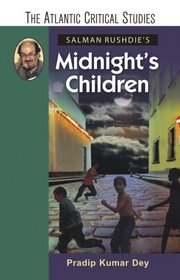Search -
Salman Rushdie's Midnight's Children (The Atlantic Critical Studies)
Salman Rushdie's Midnight's Children - The Atlantic Critical Studies
Author:
Midnights Children, the second novel of Salman Rushdie, was published in 1981. In this epical novel he speaks of many Indians and many versions of reality. High seriousness of the elderly writers, like Raja Rao or R.K. Narayan, is replaced in his fiction by playfulness, comicality and triviality. Midnights Children remains an Indian novel in the... more »
Author:
Midnights Children, the second novel of Salman Rushdie, was published in 1981. In this epical novel he speaks of many Indians and many versions of reality. High seriousness of the elderly writers, like Raja Rao or R.K. Narayan, is replaced in his fiction by playfulness, comicality and triviality. Midnights Children remains an Indian novel in the... more »
ISBN-13: 9788126909131
ISBN-10: 8126909137
Publication Date: 2/5/2008
Pages: 168
Rating: ?
ISBN-10: 8126909137
Publication Date: 2/5/2008
Pages: 168
Rating: ?
0 stars, based on 0 rating
Publisher: Atlantic Publishers & Distributors (P) Ltd.
Book Type: Hardcover
Members Wishing: 2
Reviews: Amazon | Write a Review
Book Type: Hardcover
Members Wishing: 2
Reviews: Amazon | Write a Review




